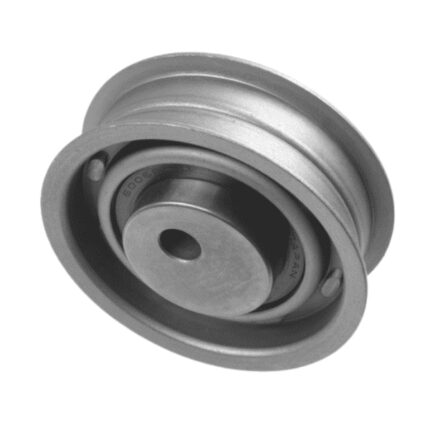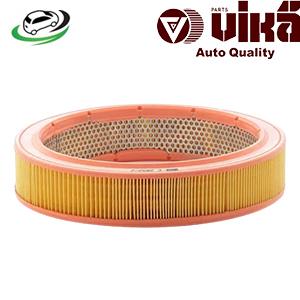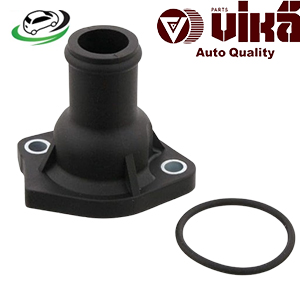Get Audi 80 FWD 4cyl/ VW Corrado G60/ Golf I/ Golf II/ Jetta I/ Jetta II/ Jetta III TDI/ Passat B4 TDI Coolant Flange 026121144E
The coolant flange is a critical component in the cooling system of an internal combustion engine. It serves as a connection point for various coolant hoses, allowing the flow of coolant between the engine and the radiator, water pump, and other components. This flow is essential for regulating the engine’s temperature, preventing overheating, and ensuring efficient operation. The coolant flange plays a vital role in maintaining the overall health of the engine and its cooling system.
2. Function of the Coolant Flange
The primary functions of the coolant flange include:
- Connecting Hoses: The coolant flange provides a secure connection point for hoses that transport coolant to and from different parts of the cooling system. These hoses include those leading to the radiator, water pump, heater core, and thermostat housing.
- Directing Coolant Flow: The design of the coolant flange helps direct the flow of coolant, ensuring that it circulates properly throughout the engine and cooling system. This circulation is crucial for effective heat dissipation and maintaining optimal engine temperatures.
- Supporting Sealing Mechanisms: Many coolant flanges incorporate gaskets or O-rings to create a tight seal between the flange and the connected hoses or components. This sealing prevents coolant leaks, which can lead to engine overheating and other serious issues.
- Facilitating Maintenance: The coolant flange can be an accessible point for technicians to inspect the cooling system and perform maintenance. This accessibility makes it easier to check for leaks, replace hoses, or perform repairs as needed.
- Temperature Regulation: By ensuring proper coolant flow, the coolant flange indirectly contributes to regulating engine temperature. A well-functioning cooling system prevents overheating and helps the engine operate efficiently.
3. Design and Construction of the Coolant Flange
The coolant flange is typically constructed from durable materials that can withstand high temperatures and pressures, as well as exposure to coolant. Common materials used include:
- Aluminum: Lightweight and resistant to corrosion, aluminum is often used in modern coolant flanges. Its excellent thermal conductivity helps improve heat dissipation.
- Plastic: Some coolant flanges are made from high-strength plastics. While lighter than metal options, plastic flanges may be less durable and more susceptible to cracking under extreme conditions.
- Cast Iron or Steel: In heavy-duty applications or older vehicles, cast iron or steel may be used for coolant flanges due to their strength and durability.
The design of the coolant flange can vary significantly between different vehicle makes and models. However, most flanges share some common features:
- Inlet and Outlet Ports: The flange typically has multiple ports for connecting hoses. These ports may be threaded or barbed, depending on the type of hoses used.
- Mounting Holes: To secure the flange to the engine or other components, it usually features mounting holes that accommodate bolts or screws.
- Sealing Surfaces: The surfaces of the coolant flange that contact hoses or other components often include grooves or flat surfaces designed to accommodate gaskets or O-rings for leak prevention.
- Temperature Sensors: Some coolant flanges may have provisions for mounting temperature sensors or switches to monitor coolant temperature.
- Shape and Size: The overall shape and size of the coolant flange will vary depending on the vehicle’s cooling system design and the specific requirements of the engine.
4. Importance of the Coolant Flange
The coolant flange plays an essential role in the performance and longevity of the vehicle’s cooling system. Its importance can be highlighted through several key aspects:
- Preventing Overheating: A properly functioning coolant flange ensures that coolant flows freely throughout the cooling system. This flow is crucial for dissipating heat generated by the engine, preventing overheating and potential engine damage.
- Maintaining Coolant Pressure: The coolant flange helps maintain the pressure within the cooling system. Adequate pressure is necessary for effective coolant circulation and to raise the boiling point of the coolant, preventing vapor lock and improving performance.
- Ensuring System Integrity: The sealing mechanisms used in coolant flanges prevent leaks, which can lead to coolant loss and subsequent overheating. A secure and leak-free connection is essential for maintaining the integrity of the cooling system.
- Facilitating System Maintenance: The coolant flange provides an accessible point for checking coolant levels, inspecting hoses, and performing maintenance. This accessibility simplifies repairs and reduces the risk of neglecting critical cooling system components.
- Supporting Overall Engine Efficiency: By contributing to effective temperature regulation and coolant circulation, the coolant flange helps ensure that the engine operates efficiently. An efficient engine consumes less fuel, produces fewer emissions, and delivers better performance.
5. Common Issues with Coolant Flanges
Despite their robustness, coolant flanges can develop issues that may impact the cooling system’s performance. Common problems include:
- Coolant Leaks: One of the most common issues with coolant flanges is the development of leaks. Leaks can occur due to worn gaskets, damaged O-rings, or cracks in the flange itself. Any coolant loss can lead to overheating and should be addressed immediately.
- Corrosion: Corrosion can affect metal coolant flanges, particularly in older vehicles or those exposed to harsh conditions. Corroded flanges may weaken and become prone to failure.
- Cracks or Breaks: Plastic coolant flanges can become brittle over time and develop cracks or breaks. Extreme temperature changes, exposure to chemicals, or physical damage can contribute to this issue.
- Improper Installation: If a coolant flange is not installed correctly, it may not seal properly, leading to leaks and system inefficiency. It’s essential to ensure that all connections are secure and that gaskets are properly positioned during installation.
- Clogging: Over time, debris or sediment can accumulate in the coolant system, potentially clogging the flange or connected hoses. This can restrict coolant flow and lead to overheating.
6. Maintaining the Coolant Flange
Proper maintenance of the coolant flange is essential to ensure its longevity and optimal performance. Here are some key maintenance tips:
- Regular Inspections: Periodically inspect the coolant flange and connected hoses for signs of wear, leaks, or corrosion. Early detection of issues can prevent more significant problems down the line.
- Check Coolant Levels: Monitor the coolant levels in the reservoir and ensure that they are within the recommended range. Low coolant levels can indicate leaks or other issues within the cooling system.
- Flush the Cooling System: Regularly flushing the cooling system helps remove debris, sediment, and contaminants that can clog the coolant flange and hoses. This process also helps prevent corrosion.
- Replace Worn Components: If any components of the coolant flange, such as gaskets or O-rings, show signs of wear, replace them promptly. Neglecting worn components can lead to leaks and overheating.
- Follow Manufacturer Guidelines: Always follow the vehicle manufacturer’s recommendations regarding coolant type, flush intervals, and maintenance procedures. Adhering to these guidelines helps ensure the longevity and performance of the cooling system.
- Professional Inspections: If you notice any unusual symptoms, such as overheating, coolant loss, or unusual noises, it’s advisable to seek professional inspection. A qualified mechanic can diagnose and address issues effectively.
7. Replacing the Coolant Flange
If the coolant flange is determined to be faulty, replacing it is often necessary to restore proper cooling system function. Here are the general steps for replacing a coolant flange:
- Gather Tools and Supplies: Before starting the replacement, gather all necessary tools, including wrenches, sockets, and any required replacement parts, including a new coolant flange and gaskets.
- Disconnect the Battery: Always disconnect the vehicle’s battery to prevent electrical issues while working on the engine.
- Drain the Coolant: Before removing the flange, drain the coolant from the system. This can usually be done by opening the drain valve located at the bottom of the radiator.
- Remove Hoses: Carefully disconnect the hoses connected to the coolant flange. Depending on the design, you may need to loosen clamps or unscrew fittings.
- Unbolt the Flange: Remove any bolts securing the coolant flange to the engine or other components. Carefully detach the flange from its mounting location.
- Install the New Flange: Position the new coolant flange in place and secure it with the appropriate bolts. Ensure that gaskets or O-rings are in place to prevent leaks.
- Reconnect Hoses: Reattach the coolant hoses to the new flange, ensuring that they are secured with clamps or fittings.
- Refill the Cooling System: After replacing the flange and reattaching the hoses, refill the cooling system with the appropriate coolant mixture.
- Reconnect the Battery: Once everything is reassembled, reconnect the vehicle’s battery and start the engine. Check for leaks and ensure that the cooling system is functioning correctly.
8. Conclusion
The coolant flange is a vital component of an engine’s cooling system, playing a key role in regulating coolant flow and maintaining optimal engine temperatures. Its functions, from connecting hoses to directing coolant flow, are essential for preventing overheating and ensuring efficient engine operation.
Regular maintenance and timely replacement of the coolant flange are crucial for preserving the health of the cooling system and the engine itself. By understanding the importance of the coolant flange and following best practices for maintenance and replacement, vehicle owners can ensure that their engines operate smoothly and efficiently for years to come.
Follow us on Facebook for more parts.




Reviews
Clear filtersThere are no reviews yet.